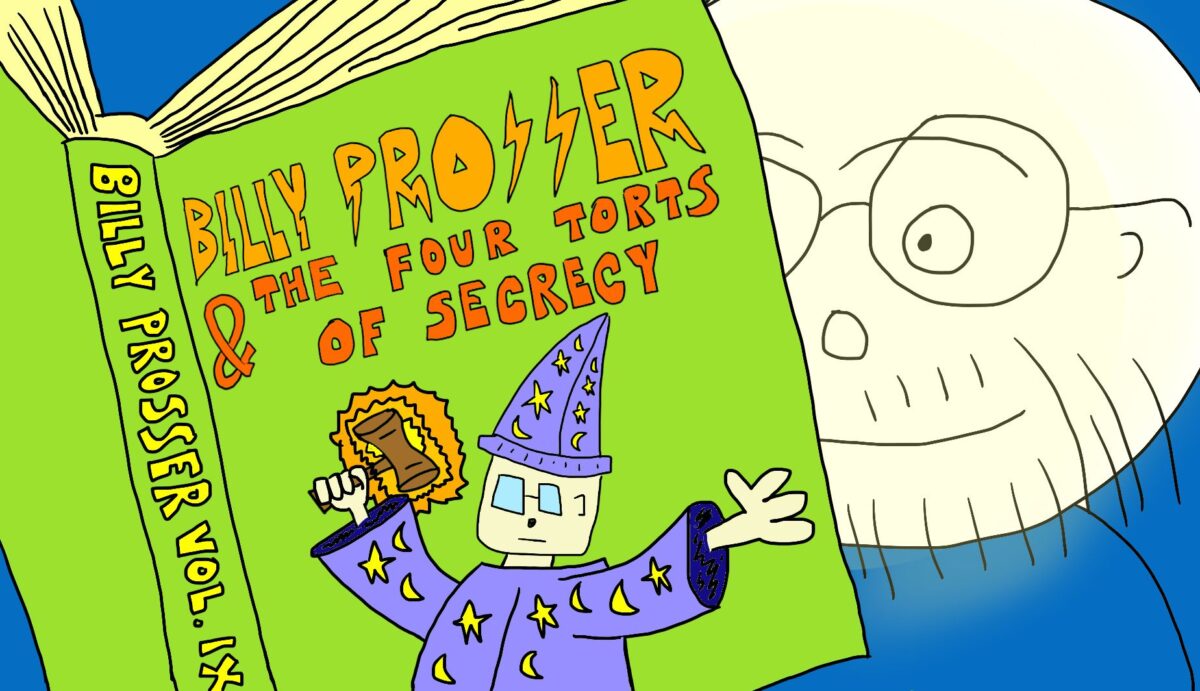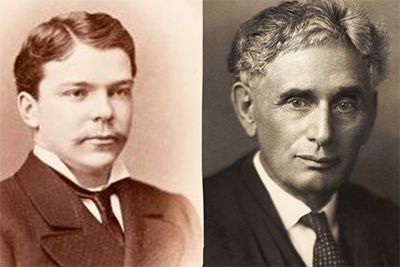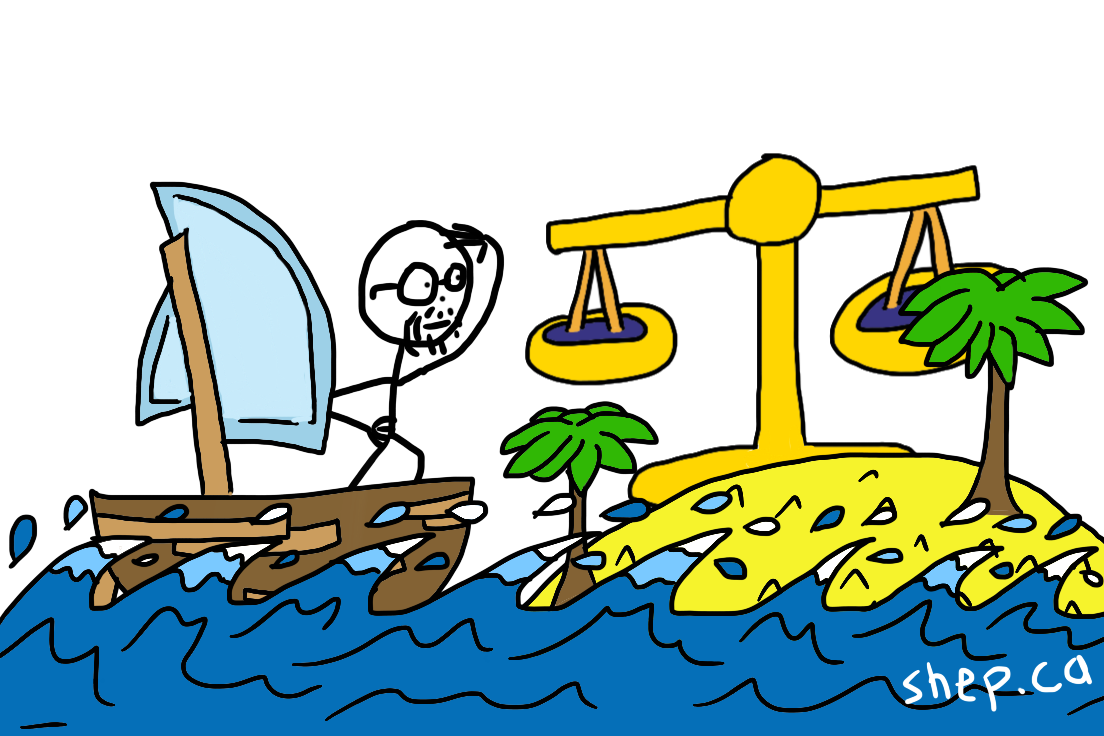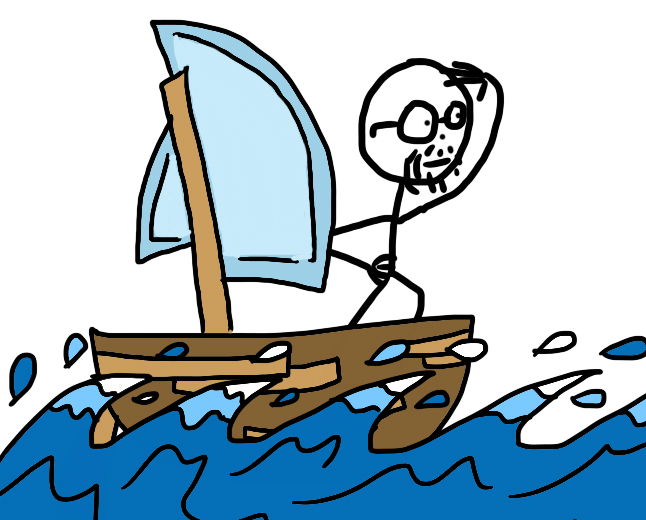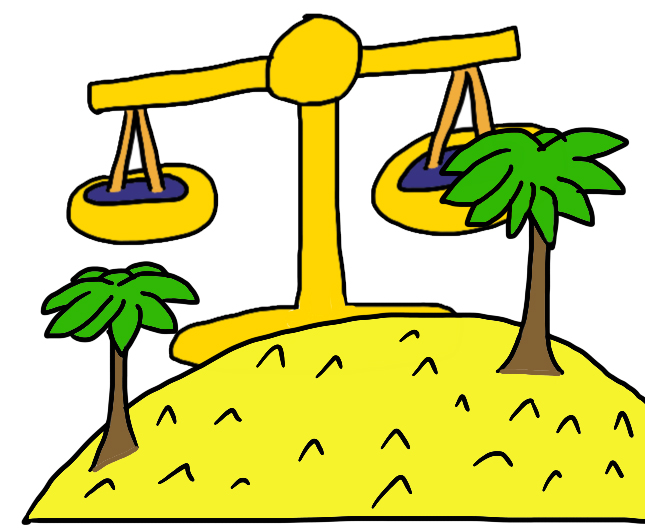Quick quiz: who’s not a lawyer? Me! What’s not legal advice? This!
“Billy Prosser and the Four Torts of Secrecy.” Sounds like a YA wizard novel, right? Well, if we’re looking at the history of privacy law, Prosser was kind of a wizard. He took the raw material of the Warren/Brandeis “Right to Privacy” concept and hammered it into shapes that would be more easily and directly applied by law.
(and frankly, isn’t all law wizardry? The application of will and language to shape reality; creating changes in the world through the power of the mind. Also: a lot of robes.)
(and yes, they’re privacy torts, not “secrecy” torts, but the Harry Potter riff doesn’t work nearly as well that way, and this is how I choose to spend my Sunday mornings, so there.)
When Warren and Brandeis kicked off the right to privacy, they summed it all up by essentially saying their big idea would be more likely to live as torts — people suin’ people, for the layperson — than public law (like criminal law). In “The Right to Privacy,” they identify likely remedies as tort in all cases, and, rarely, injunction. They frame criminal law as desirable but unlikely without legislation.
So, following “The Right to Privacy,” the idea just kind of… hangs there, like an indecisive seagull, for decades. It pops up in all sorts of scattered cases, but not particularly cohesively.
Then, boom! 1960! Ben Hur! Green Eggs and Ham! The Flintstones! And William Prosser writes “Privacy” in the California Law Review.1William L. Prosser, Privacy, 48 Calif. L. Rev. 383, 388-89 (1960)
This wasn’t Prosser’s first kick at the privacy law can.2For a very good overview of the WAB -> Prosser lineage of privacy and torts, and more on pre-’60 Prosser, Richards and Solove’s “Prosser’s Privacy Law: A Mixed Legacy” (California Law Review , December 2010, Vol. 98, No. 6 (December 2010), pp. 1887-1924) is terrific, both as an overview of the evolution of privacy and tort, and a criticism of Prosser’s work and legacy. Working paper at https://papers.ssrn.com/sol3/papers.cfm?abstract_id=1567693
It was an analysis of decades of tort privacy cases, culminating in Prosser drawing four broad categories of privacy-as-tort:
- Intrusion upon the plaintiffs seclusion or solitude, or into his private affairs.
- Public disclosure of embarrassing private facts about the plaintiff.
- Publicity which places the plaintiff in a false light in the public eye.
- Appropriation, for the defendant’s advantage, of the plaintiffs name or likeness.
Let’s bear in mind for a second that this was originally U.S. writing, and while broadly adopted, was adopted chiefly in American courts. But Canadian courts have steadily been drawing on Prosser’s tort categories as well, with the fourth tort being recognized in 2019.3 Some coverage here: https://www.cantechlaw.ca/news/ontario-court-adopts-false-light-publicity-privacy-tort
Taking it back to high ed marcomms, all four are squint-and-you-see-it applicable to photo and video capture and consent.
There’s a bit of awkwardness here in terms of how I’m writing, too. At the moment, I’m moving more or less sequentially through time; some of the tort wrong that Prosser identifies become clearer in terms of their application through future cases.
The most applicable of the four are the first and fourth, on their surface.
1. Intrusion upon the plaintiffs seclusion or solitude, or into his private affairs.
Jones v Tsige is the 300-pound gorilla intruding on seclusion in Canadian courts. Where does a 300-pound gorilla intrude on seclusion? Anywhere it wants. In a nutshell, Tsige abused her access at a bank to spy on the financial records of Jones — who worked at the same bank, and had been partnered with Tsige’s ex.4You can read the case at https://www.canlii.org/en/on/onca/doc/2012/2012onca32/2012onca32.html
The big quote is p. 71:
The key features of this cause of action are, first, that the defendant’s conduct must be intentional, within which I would include reckless; second, that the defendant must have invaded, without lawful justification, the plaintiff’s private affairs or concerns; and third, that a reasonable person would regard the invasion as highly offensive causing distress, humiliation or anguish. However, proof of harm to a recognized economic interest is not an element of the cause of action. I return below to the question of damages, but state here that I believe it important to emphasize that given the intangible nature of the interest protected, damages for intrusion upon seclusion will ordinarily be measured by a modest conventional sum.
Sneaky peeks at people’s bank records are a bit of a leap, in the abstract, from “intrusion upon seclusion” in other areas, but the key point here is that Canadian courts recognize that seclusion is a thing, and you can intrude on it.
Let’s also bear in mind that my overall arc here is unpacking consent issues with a particular interest in “public” spaces (and this gets surprisingly fungible in higher ed settings). At first, it seems like “seclusion and solitude” and “public space” is antithetical… but stay tuned, it’s a more nuanced conversation than you think, and part of a larger philosophical and legal conversation about privacy and context that’s been raging for decades now, and will be covered in upcoming posts.
For now, let’s take it on faith that yes, even if somebody is in a public area, you can still intrude on their seclusion or solitude. And that photographs can be as intrusive as snooping in bank records. I know that might not be satisfying at the moment, but trust me, we’ll get there.
4. Appropriation, for the defendant’s advantage, of the plaintiffs name or likeness.
The last — “appropriation for advantage” is the other clear issue. Again, this is something that seems kind of clear-cut at first. It’s easy to trace this as it pertains to for-profit businesses; if you snap a picture of me without me knowing, and suddenly it’s on billboards coast to coast advertising beer, that’s a no-brainer (and for “false light” as well — what if I’m a known speaker against alcohol? A youth pastor?).5A good overview of appropriation at the McCarthy blog, here: https://www.mccarthy.ca/en/insights/blogs/snipits/future-everyone-will-have-their-personality-misappropriated-15-minutes
In higher ed, though, we tend to self-identify as the “good guys,” and my feeling is there’s a fuzzy sense that we can get away with more because (a) non-profit, (b) education is good, and (c) kind of a wibbly crossover between the oft-mentioned, oft-discussed fair use (U.S.) fair dealing (Canada) exceptions to copyright kinda sorta making us think that everything a college or university does is fair-dealing-esque.
But… well, no. We might be “good guys,” but we’re not exempt from the same strictures that govern for-profit business when it comes to exploiting images for “advantage”. Note that word — it’s advantage, not gain. The assumption that we’re not making money from something doesn’t move us out of the ‘advantage’ zone. Higher ed is in this very weird space where we’re collegial but also competitive — universities are notionally supposed to all get along and work together, but at the end of the day we’re also out there pitching and brawling to attract the very best students, researchers, research funding, donors… “advantage” starts shading very differently when you think of the various competitive spaces we exist in.
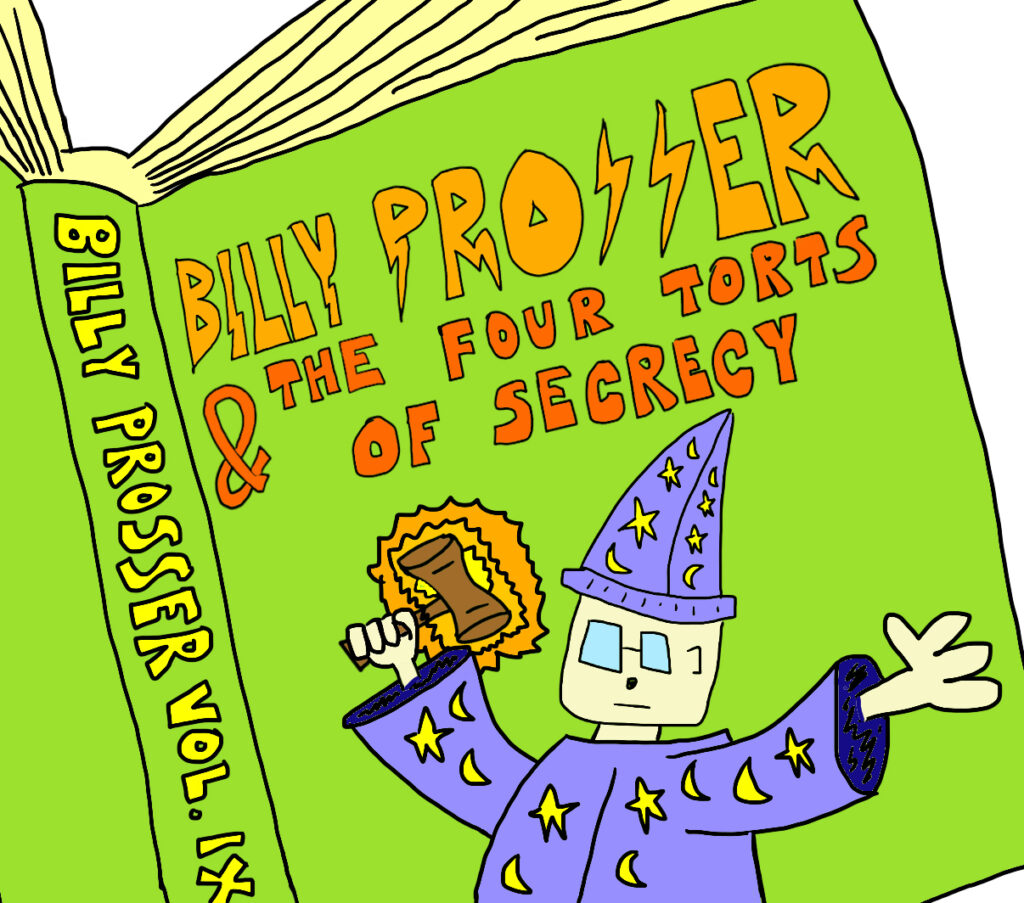
Stepping into more explicit legislative language, in Canadian jurisdictions where violation of privacy is a statutory wrong, it still paints a much broader picture than “profit”. For instance, in B.C.:
[3](2) It is a tort, actionable without proof of damage, for a person to use the name or [likeness, still or moving] of another for the purpose of advertising or promoting the sale of, or other trading in, property or services, unless that other, or a person entitled to consent on his or her behalf, consents to the use for that purpose.6Hie ye to the B.C. Privacy Act – https://www.bclaws.gov.bc.ca/civix/document/id/complete/statreg/96373_01 “sale of or other trading in, property or services…” I wouldn’t bet the farm on wriggle room here.
“Appropriation” here is a slippery legal construct because there’s a ton of overlap with prior torts — both misappropriation of personality, and “passing off,” which are also their own things. To my limited knowledge, there’s no precedent in Canada for the specific Prosser appropriation tort, as a privacy action, without that gloss into the other areas as well. But my knowledge is admittedly limited.
And — and this is important — to date, misappropriation of personality (the non-privacy-related tort) has generally been advanced by famous people, in pursuit of damages that would equate to royalties received had they granted permission for their likenesses to be used.
To date — to my knowledge — there hasn’t been a “normal citizen” misappropriation case before the courts that’s seen success. A recent case in point is Hategan v. Farber, 2021 ONSC 874 — Hategan, a former member (and self-declared “former female face”) of the Heritage Front7let us sit for a moment with the fact that the “former female face” of the Heritage Front was basically named “Hate again,” and marvel brought suit against Farber, a television host, for appropriation of personality for… essentially, talking about her, it looks like. The judge, in a claim for summary judgment:
Yes there is a tort of wrongful appropriation of personality. This tort is not made out. It is not ever a “close call”.8Get your law readin’ on at https://www.canlii.org/en/on/onsc/doc/2021/2021onsc874/2021onsc874.html, at 117. Incidentally, this is a great rubbernecking case if you’re into reading court decisions that don’t go at all the way the plaintiff thought they would.
So there’s clearly a commonly understood sense of what appropriation of personality entails, and to date it’s been a hard threshold to reach. But that doesn’t mean impossible, or impossible forever.
What about the other two?
2. Public disclosure of embarrassing private facts about the plaintiff.
“Public disclosure of embarrassing facts” is less easy to see in higher ed marcomms; first, there’s a strong internal inclination to capture and show positive things, so it’s hard to easily see a marcomms agenda that sets out to disclose anything that somebody might find untoward.
It’s not without precedent in Canada — as Liam O’Reilly details, there have been a few cases of legal reasoning that hinge on this aspect of tort.9I am grateful to Mr. O’Reilly — he’s literally done my homework for me here, including a dive into small claims court cases: https://liamoreilly.ca/2017/07/31/public-disclosure-of-embarrassing-private-facts/ A minimal award, but still a finding of this wrong, in Action Auto Leasing and Gallery Inc v Gray. The most significant — Jane Doe 46544 v ND.10Over here at https://www.canlii.org/en/on/onsc/doc/2016/2016onsc541/2016onsc541.html — really leaned strongly into the tort, but was later set aside, so its value as precedent is gone (although the legal reasoning remains).11https://www.canlii.org/en/on/onsc/doc/2016/2016onsc4920/2016onsc4920.html — this is a point at which I confess that I’m still a limited scholar in terms of my reading-law ability — there seem to be a number of procedural issues here for the setting-aside, but no actual flaw in the judicial reasoning or application of the tort per se
3. Publicity which places the plaintiff in a false light in the public eye.
There was a bit of ballyhoo when this finally hit Canadian judicial decisions as the “last Prosser tort” to be recognized in the country.12A good summary at Can Tech Law – https://www.cantechlaw.ca/news/ontario-court-adopts-false-light-publicity-privacy-tort
In Yenovkian v. Gulian 2019 ONSC 7279, a judge went above and beyond previously established tort awards in finding against a husband who had made wildly inaccurate public claims about a spouse in a custody case. This is one of the introductions of “cyberbullying” into Canadian law, and the judge actually pulls directly from the American Restatement of Torts:
Publicity Placing Person in False Light
One who gives publicity to a matter concerning another that places the other before the public in a false light is subject to liability to the other for invasion of his privacy, if
(a) the false light in which the other was placed would be highly offensive to a reasonable person, and
(b) the actor had knowledge of or acted in reckless disregard as to the falsity of the publicized matter and the false light in which the other would be placed.13Yenkovian decision at https://www.canlii.org/en/on/onsc/doc/2019/2019onsc7279/2019onsc7279.html, above quote at 170
So we’ve got the U.S. idea, and even the test, now in Canadian law as precedent.
It’s… challenging to see how this would affect my current point of focus, which is photo/video capture and consent. But it’s interesting that it’s on the books in a broader sense, and may be worthy of note in higher ed in general, considering the sheer volume of social media drama/noise that can be generated during things like, say, student council elections.
The other thing to note is that in a general sense, informed consent solves everything in terms of the above tort categories. Eh, almost everything. And this is where we get into the philosophical foundation versus the practical elements of consent management.
I kind of want to park that for now, because a lot of the case law stuff coming up starts overlapping with the philosophical stuff that’s also coming up. Suffice it to say that there’s a natural tension in consent formulation: the consent-seeker is best served by consent that is broad, general and all-encompassing. But the notion of informed consent is best served by consent that is specific and well-articulated.
This distinction becomes clear when you start thinking of the outcomes of these torts, particularly #3 and #4. Let’s stay mindful of the overall needs of the institution’s marketing and communications mechanisms. A photo taken of a student doing one thing at a particular place and point in time could potentially be re-used for a radically different purpose. I may actually write up an incident from my own career as a case study next week.
This could conceivably trigger various Prosser torts in various ways, unless consent is either amazingly broad at the moment of capture (and consent well tracked), or a lot of effort is put in to re-seek consent for new purposes as they arise.
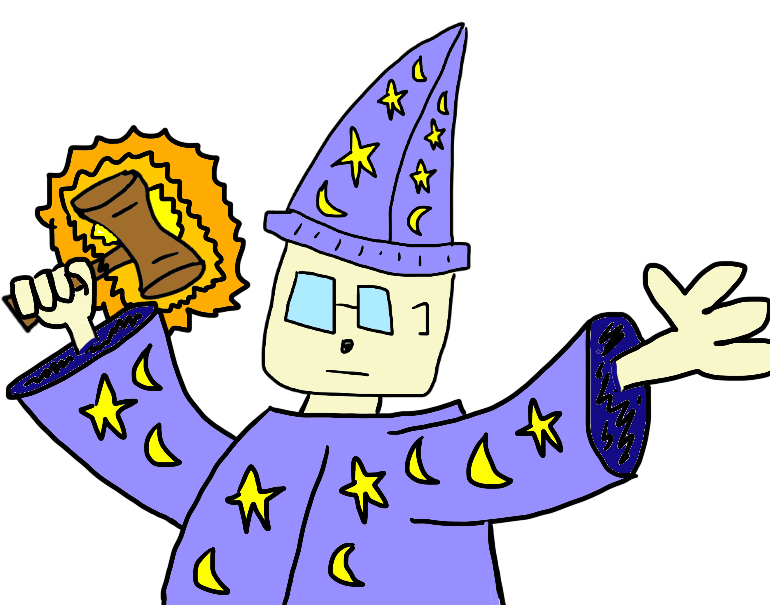
A final note on Prosser — he definitely moved privacy law from a kind of abstract notion in to something with more form and substance — as we can see above, his American formulation of privacy torts has now made its way completely into Canadian law. But that doesn’t mean Prosser was all that and a tube of Pringles. I’m grateful to Rchards/Solove’s “Prosser’s Privacy Law: A Mixed Legacy” as a great read that identifies some key gaps in Prosser’s proposed formulation, and some inadvertent damage it may have done in the long haul.14That link once again: https://papers.ssrn.com/sol3/papers.cfm?abstract_id=1567693
Next week, a quick case study of how the higher ed marcomms machine can run into trouble when it repurposes photos. After that, we’re going to take a look at some privacy law theory that develops after Prosser, and the growing legal theory that context might be super important (spoiler: it is!).
May 23, 2021
Soundtrack:
Georgia Anne Muldrow: VWETO III
Vegyn: Only Diamonds Cut Diamonds
Murcof: The Alias Sessions
- 1William L. Prosser, Privacy, 48 Calif. L. Rev. 383, 388-89 (1960)
- 2For a very good overview of the WAB -> Prosser lineage of privacy and torts, and more on pre-’60 Prosser, Richards and Solove’s “Prosser’s Privacy Law: A Mixed Legacy” (California Law Review , December 2010, Vol. 98, No. 6 (December 2010), pp. 1887-1924) is terrific, both as an overview of the evolution of privacy and tort, and a criticism of Prosser’s work and legacy. Working paper at https://papers.ssrn.com/sol3/papers.cfm?abstract_id=1567693
- 3
- 4You can read the case at https://www.canlii.org/en/on/onca/doc/2012/2012onca32/2012onca32.html
- 5A good overview of appropriation at the McCarthy blog, here: https://www.mccarthy.ca/en/insights/blogs/snipits/future-everyone-will-have-their-personality-misappropriated-15-minutes
- 6Hie ye to the B.C. Privacy Act – https://www.bclaws.gov.bc.ca/civix/document/id/complete/statreg/96373_01
- 7let us sit for a moment with the fact that the “former female face” of the Heritage Front was basically named “Hate again,” and marvel
- 8Get your law readin’ on at https://www.canlii.org/en/on/onsc/doc/2021/2021onsc874/2021onsc874.html, at 117. Incidentally, this is a great rubbernecking case if you’re into reading court decisions that don’t go at all the way the plaintiff thought they would.
- 9I am grateful to Mr. O’Reilly — he’s literally done my homework for me here, including a dive into small claims court cases: https://liamoreilly.ca/2017/07/31/public-disclosure-of-embarrassing-private-facts/
- 10
- 11https://www.canlii.org/en/on/onsc/doc/2016/2016onsc4920/2016onsc4920.html — this is a point at which I confess that I’m still a limited scholar in terms of my reading-law ability — there seem to be a number of procedural issues here for the setting-aside, but no actual flaw in the judicial reasoning or application of the tort per se
- 12A good summary at Can Tech Law – https://www.cantechlaw.ca/news/ontario-court-adopts-false-light-publicity-privacy-tort
- 13Yenkovian decision at https://www.canlii.org/en/on/onsc/doc/2019/2019onsc7279/2019onsc7279.html, above quote at 170
- 14That link once again: https://papers.ssrn.com/sol3/papers.cfm?abstract_id=1567693
